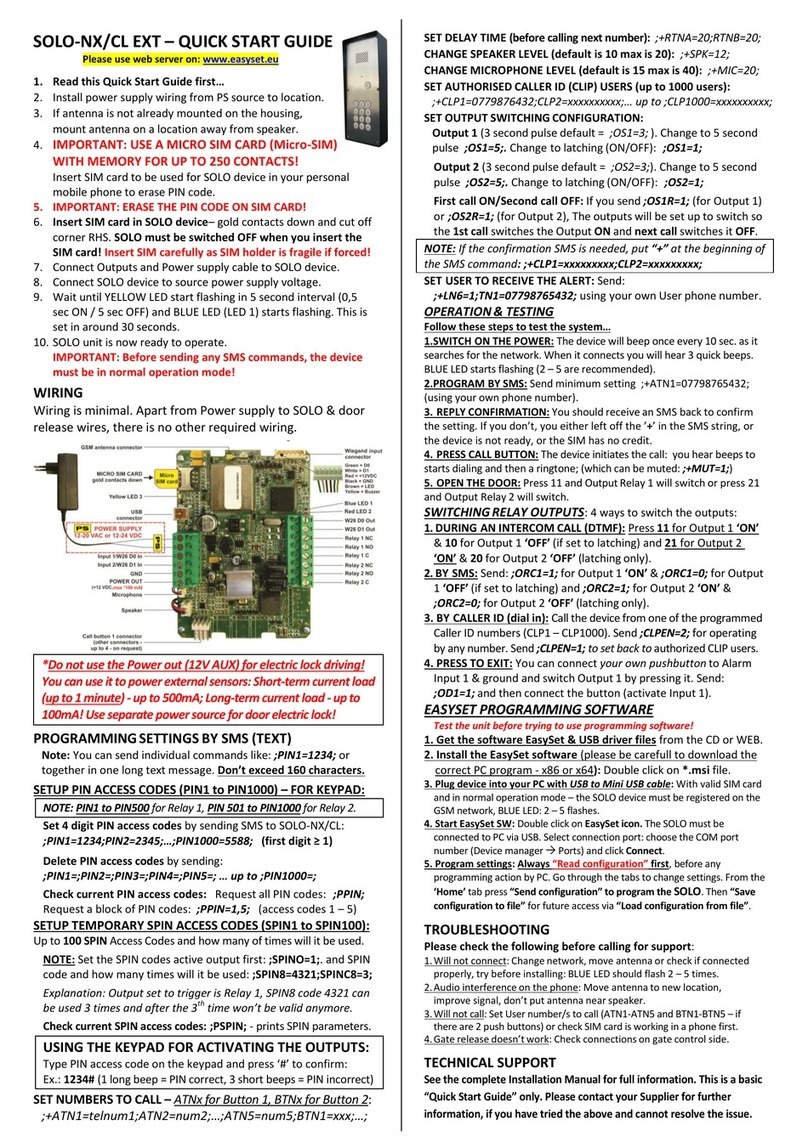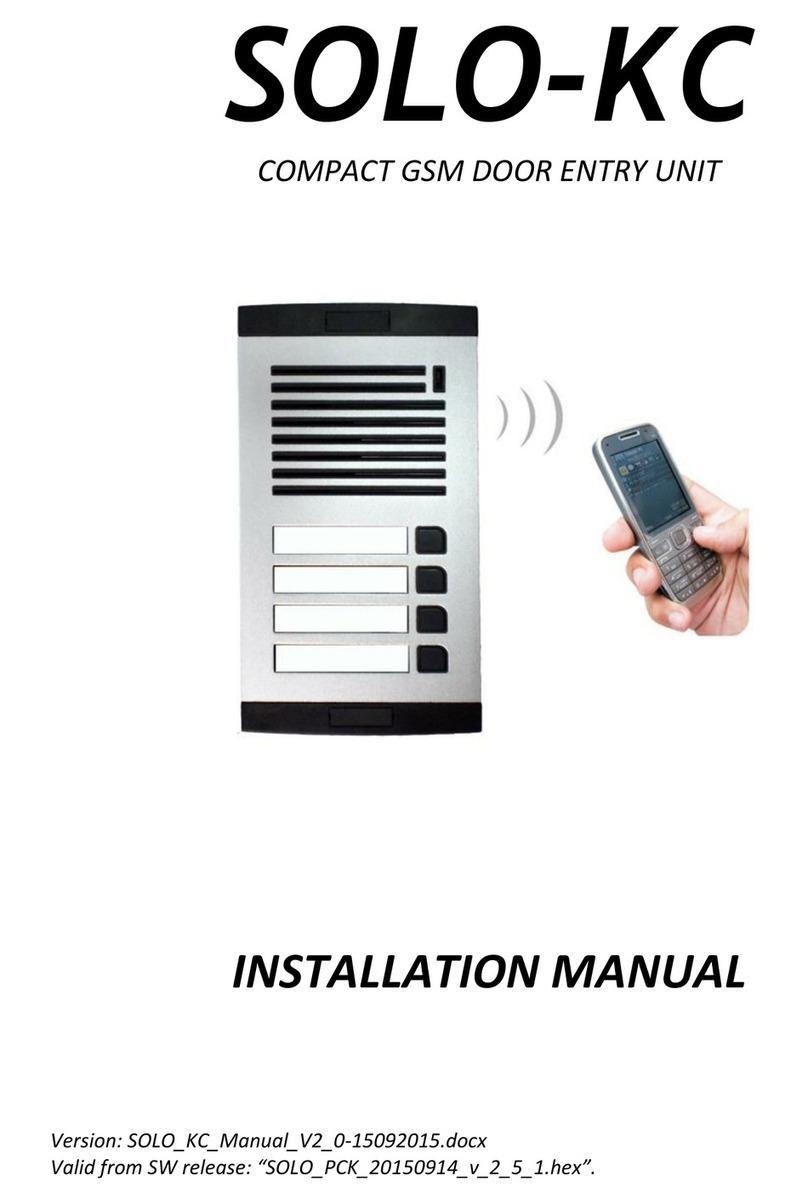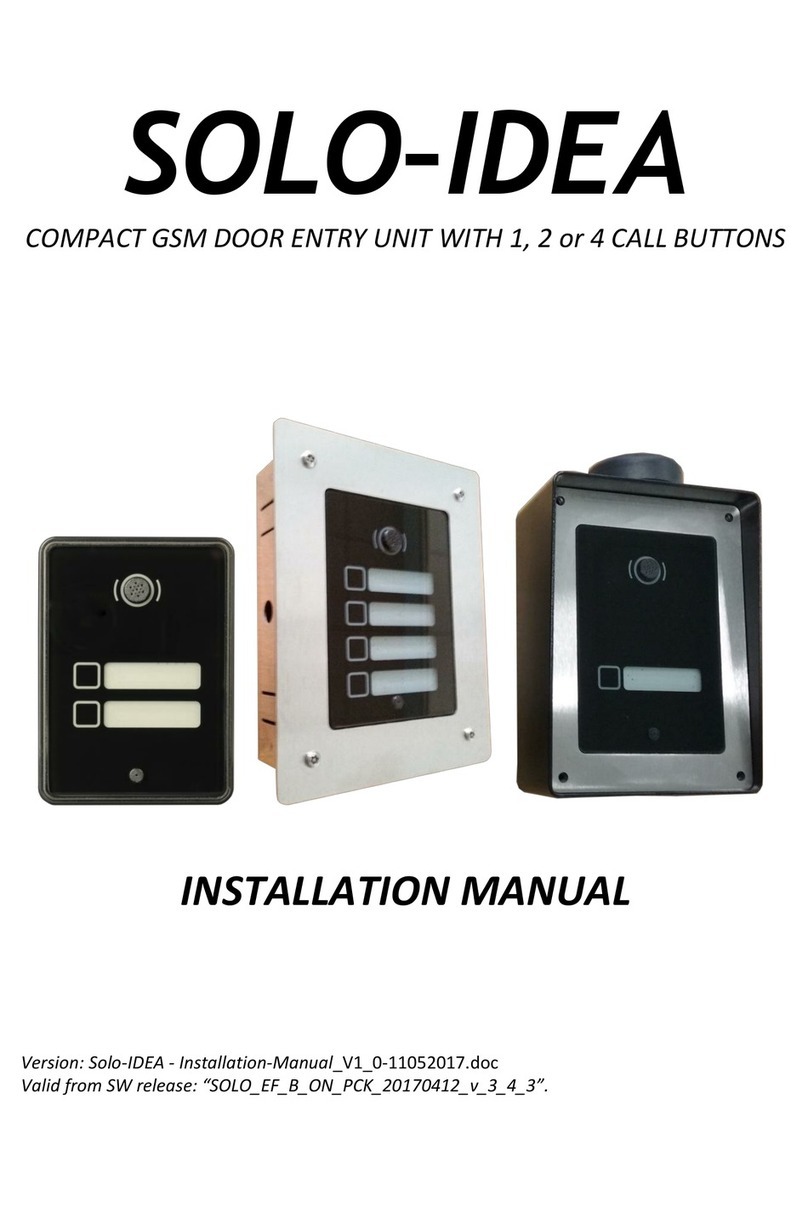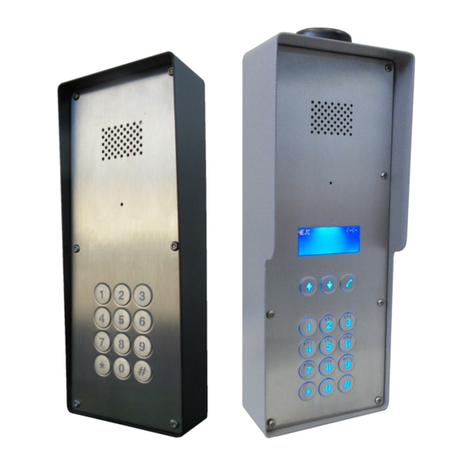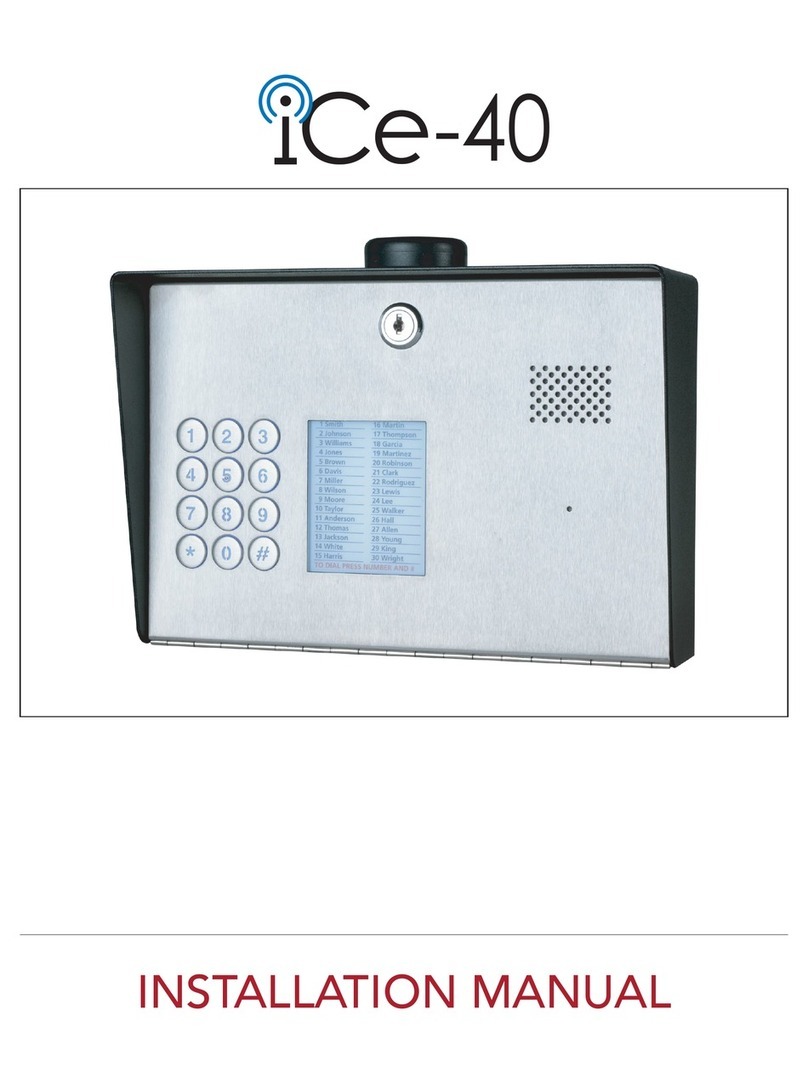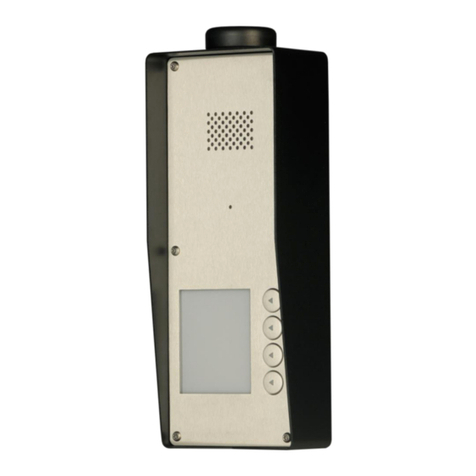
Page 2
Contents
1FOR YOUR SAFETY.............................................................................................................................................4
2INTRODUCTION...................................................................................................................................................4
3FEATURES AND APPLICATIONS.....................................................................................................................4
4START UP...............................................................................................................................................................5
5LED DISPLAY........................................................................................................................................................6
6CLEAR ALL PROGRAMMED DATA FROM SOLO-NX................................................................................6
7CONNECTION DIAGRAM ..................................................................................................................................7
8PROGRAMMING SOLO-NX ...............................................................................................................................7
9THE SOLO-NX PARAMETERS ..........................................................................................................................8
9.1 ALARM SUPPORT.............................................................................................................................................................8
9.2 OUTPUT MANAGEMENT ..............................................................................................................................................12
9.3 SECURITY LEVEL - SL...................................................................................................................................................13
9.4 PREPAID CARD CREDIT AND VALIDITY INFORMATION......................................................................................14
9.5 SET-UP PARAMETERS...................................................................................................................................................16
9.6 SMS MESSAGES EDITOR ..............................................................................................................................................19
9.7 GSM INTERCOM .............................................................................................................................................................20
9.8 CALLER ID RECOGNITION - CLIP...............................................................................................................................23
9.9 EVENT LOGGING ...........................................................................................................................................................24
9.10 SPECIAL SMS COMMANDS ..........................................................................................................................................25
10 PRINT-OUT OF THE PARAMETERS..............................................................................................................26
10.1 RECEIVE ALL PARAMETERS (PALL) .........................................................................................................................26
10.2 CHECK SW REVISION (PSW)........................................................................................................................................26
10.3 CHECK SIGNAL QUALITY (PSQ) .................................................................................................................................26
10.4 RECEIVE TELEPHONE NUMBERS (PTN)....................................................................................................................26
10.5 RECEIVE LINKS (PLN)...................................................................................................................................................26
10.6 RECEIVE INPUT PARAMETERS (PIN).........................................................................................................................26
10.7 RECEIVE INPUT FILTER VALUE (PID) .......................................................................................................................27
10.8 RECEIVE OUTPUT FILTER VALUE (POD)..................................................................................................................27
10.9 RECEIVE DELAY BEFORE DIAL VALUE (PDD)........................................................................................................27
10.10 RECEIVE ACCESS TELEPHONE NUMBERS (PSL).....................................................................................................27
10.11 RECEIVE OUTPUT PARAMETERS (POS) ....................................................................................................................27
10.12 RECEIVE ALL PROGRAMMED SMS MESSAGES (P#) ..............................................................................................27
10.13 RECEIVE SET UP PARAMETERS VALUE (PPA) ........................................................................................................27
10.14 RECEIVE CREDIT PARS PARAMETERS (PCREF)......................................................................................................28
10.15 RECEIVE ALL CLIP PARAMETERS (PCLP) ................................................................................................................28
10.16 RECEIVE INTERCOM BUTTON 1 PARAMATERS (PDEA)........................................................................................28
10.17 RECEIVE INTERCOM BUTTON 2 PARAMATERS (PDEB)........................................................................................28
10.1 RECEIVE INTERCOM BUTTON 3 PARAMATERS (PDEC)........................................................................................28
10.2 RECEIVE INTERCOM BUTTON 4 PARAMATERS (PDED)........................................................................................28
10.3 STATE OF THE CREDIT FOR THE PREPAID CARD ..................................................................................................29
